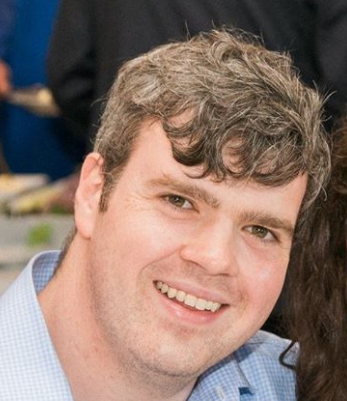This afternoon at 1pm ET/10am PT I'll be doing a Callin show with Evan Armstrong from Every to talk about Netflix. Tune in! (For those who have asked: Callin is now available for Android.)
How Would You Run a 10,000-Year Endowment?
A while back when I was looking for a finance job, it occured to me that I should figure out what my ideal job would be just to have a standard to compare against. And, after giving it some thought, I decided the coolest conceivable asset management job would be running an endowment fund for the Long Now Foundation, with the explicit mandate of preserving and growing capital over several millennia.

Think of the perks:
- You can ignore every single short-term problem.
- Trends like the Internet and the Industrial Revolution occur in "the short-term."
- Take all the illiquidity risk you want—you have generations to wait for a good exit opportunity!
- Take all the duration risk you want; those thousand-year bonds will mature eventually.
- The space of investable opportunities is incredibly wide: for many hard tech investments the judgment is "it will be profitable, just not yet," but those are exactly the investments that an investor with an effectively unlimited time horizon has a competitive advantage in.
It's a fun thought experiment for investors because so many other kinds of investing are explicitly or implicitly constrained by timelines. An individual can invest to save for retirement, which usually means they start out with equities and slowly shift into bonds; once they're not earning money, they need something that produces a reliable return, even if that return is not especially exciting.1 Someone saving for their kid's college through a 529 plan also has a time limit, though since having kids of college ages roughly lines up with peak earning power, those portfolios can tolerate higher risk. A pension fund has retirees to worry about, with obligations that pay on an actuarially predictable schedule. A typical endowment fund needs to pay out money over time for whatever it's funding, and in general the managers of endowment funds don't want to be in a position where the school, charity, or hospital they're associated with is cutting back on its activities because something happened to interest rates or equity prices. Even a very wealthy person whose standard of living could not conceivably be changed if they lost money has a time limit: they're going to die, and whoever is responsible for their future money may not spend or distribute it in the way they'd like.2
So the real nature of this thought experiment is: consider what your approach to managing assets would be if you were totally unconstrained by specific timelines, but still wanted to maximize wealth over time. Of course, managing money for the insanely long term doesn't mean total indifference to the short term; over long time scales, you need capital appreciation: it would be exceptionally hard to calibrate a set of investments to produce a precisely 0% rate of return over a long period, and if you're aiming for zero you might miss to the downside. Meanwhile, an exceedingly patient investor can manage drawdowns that would be ruinous to other investors. When people backtest Kelly-optimal strategies, they'll see some pretty distressing declines (and the longer you make Kelly bets, the bigger the expected max drawdown gets, by definition; a portfolio designed for maximum possible returns over 10,000 years will, from time to time, lose 90%+ of its value but still go on to reach new record highs).
Another peculiar risk that shows up when you think about excessively long-term investments is the "risk" of accelerating global growth. Robin Hanson has pointed out that human history has gone through three economic epochs, hunting, farming, and industry, with expected time to double GDP compressing from 230,000 years to 860 years to 15 years. Thinking about this risk gets into tricky questions about what wealth means; think of it from the perspective of a hunter-gatherer and maybe true wealth is enough roots and nuts to last through two entire winters. The abstract form of wealth is that it's the ability to get people to change their behavior without resorting to force or deception. Which means that one risk to this hypothetical 10,000-year endowment fund is that everyone else gets so rich that the fund can't use its money to accomplish anything.
There are some amazing examples of the persistence of wealth over time. The Rothschilds have been synonymous with wealth for a long time (I looked at some early results through Google Books' N-Gram search, and the first book I checked says "the Rothschilds were not always rich, though, at last, they amassed millions," and was published in 1799.) Researchers in 2016 found that in Florence, the surnames associated with higher wealth were still, in 2011, correlated with high-earning and high-status jobs. So there's at least some evidence that wealth can persist over extremely long periods.
But that evidence is fragmentary, statistical, and prone to many different interpretations. A useful thing for American readers to keep in mind is that just about every other country has experienced a cataclysmic drawdown in wealth. Whatever your asset allocation, if your country has a revolution, faces a government collapse, suffers a plague, loses a war, or even wins one expensively, it's possible for most wealth to reset to zero.
This hasn't happened within the cultural memory of the US (or Australia), but it seems to be part of how people historically thought about wealth. One of those rich fifteenth-century Florentines would have been Lorenzo de' Medici, who allegedly wrote this song about the fleeting nature of worldly wealth, and the imperative of having a good time while you can afford it. (There is a modern cover.)
And when you're thinking about preserving capital over centuries or millennia, that ends up being the only thing you think about: what are the worst plausible scenarios, given that low odds multiplied by ten thousand years equals certainty?
The possibility that wealth persists in families raises another question: are there non-family ways to achieve this? There are companies that have been around for over a thousand years, but they're typically small, and generally family-owned when they're not associated with a religious organization. Even keeping wealth going in families is hard, though there's some serial correlation there: first-generation rich people don't always raise their kids to handle wealth well, because the wealth usually arrives after the kids. But from the second generation onwards, parents of future heirs at least have a head start in figuring out which of their kids should get what, and in inculcating the right attitude towards wealth.3
Making ultra-long term plans slowly shades from finance into eschatology. To your ancestors, some aspects of modernity sound like heaven (extremely rare childhood mortality, abundant food and shelter, cheap-to-free access to all of the world's information). Some probably look like hell, though; modern social atomization would be pretty distressing to someone used to a thick community, and they'd probably be disappointed by some of the cheap-to-free information you choose to access. But that future only arrives if apocalyptic outcomes can be avoided.
And that brings us back to the original question: a 10,000-year endowment is really only appropriate for The Long Now Foundation; every other institution on earth either has a finite lifespan or involves a religious vow of poverty that would preclude the endless accumulation of material resources. And the point of the Long Now Foundation is not really to last for ten thousand years, but to get humanity to think on that kind of timescale. Looking back at history, the right bet is that accumulated wealth eventually goes to zero. But if the Long Now Foundation can accomplish its mission, then maybe that won't happen; if we're all thinking on ten thousand year timescales, then those ruinous speedbumps—wars, plagues, revolutions, etc.—all get less likely to happen, and more institutions are structured to recover from them.
So it is, in fact, hypothetically possible to create an endowment fund that's meant to last for ten thousand years. But only if there's no reason to do it.
Thanks to Nick Brysiewicz of The Long Now Foundation and Florence Tsai of Centerprising for some very insightful conversations about these questions.
A Word From Our Sponsors

Mercury is the banking stack for startups.* Get FDIC-insured accounts, virtual and physical debit cards, currency exchange, and domestic and international wires.
Customize the banking experience you want with features like read & write API access, custom team-management, and integrations with the tools your startup uses, like Quickbooks and Stripe.
And you can keep growing with Mercury. Use tools like Mercury Raise, which connects founders to quality investors, 1:1 mentorship, and a curated network, or Mercury Capital, which matches startups with the right financing options with just four questions.
Head to mercury.com to apply in minutes, right from your laptop.
*All banking services provided by Evolve Bank and Trust, member FDIC.
Elsewhere
Buy-to-Sell?
I reluctantly scratched "look into Tower Semi" off my to-do list earlier this week when Intel bought them for a premium of nearly 50%. This piece is a smart look at what Intel might be planning next: Intel believes that foundry services are a strategic imperative, so it makes sense for them to buy a foundry company. But they may also believe that consolidating that business with the rest of Intel is not a financial imperative. The piece argues that buying Tower gives them more to sell, but also sets them up to separately report their foundry metrics and perhaps to spin off a tracking stock. Capital-intensive growth plans require, well, capital, and one decent source of capital is to turn sum-of-the-parts valuations from a hypothetical exercise into an actual plan, and use the new tracking stocks to fund growth on more advantageous terms.
Dematerializing Gaming
The share of video games with digital-only releases rose from 76% to 89% from 2018 to 2021, with the majority of physical releases coinciding with digital ones. Digital distribution has obviously changed how games get priced—more repeat purchases and subscriptions, relatively less upfront activity. It's also changed how they're created and updated. A multiplayer game without patches is a game where players will find a dominant strategy and use it forever, or possibly find a dominant strategy and a decent counter to it. Maintaining game balance over time is much easier to do when games are continuously improved by default. Digital releases also reduce the cost of a bad launch, by making it easier to a) ship a few patches to fix the most glaring mistakes, and b) hold back on promoting a new title, then increase marketing spend once it's in a condition players won't hate. So the game industry is shifting to a more continuous model both in terms of how gaming revenue is collected and how the games are made. It will be interesting to see if this reduces the industry's reputation for brutal crunch time ahead of launches.
New Profits in Old Media
Magazine company Condé Nast turned a profit in 2021 for the first time in years ($, WSJ), through a combination of cost cuts and more subscription revenue. There's a reasonable argument to be made that digital versions of print magazines should be more profitable than the analog versions; pixels are cheaper than newsprint, which means that delivering the same product costs less and that slicing up the product into individual articles, and bundling access to publications, is a viable model. It mostly hasn't worked that way yet, but there are promising signs (in newspapers, for example, Lee Enterprise is a print business shrinking in the teens annually attached to a digital business growing in the teens—and last quarter, that print business spent 13.7% of revenue on newsprint and ink, a cost that isn't shrinking as fast as revenue!). Changes in distribution affect media consumption in addition to media monetization, but perhaps less so for textual media than for other kinds; many people did, in fact, read magazines for the articles.
Insourcing
The realist/optimist synthesis on outsourced manufacturing was that rich countries wouldn't bring back low value-added production unless we got a lot poorer, but that we could maintain and grow manufacturing in higher-value sectors. Some of this is happening; the only countries that produce commercial widebody aircraft have a GDP per capita in the 90th percentile or above. But another driver of insourcing more recently is transportation costs, so it turns out that the things rich countries will build more of are not necessarily complex technologies requiring an educated workforce and expert management but heavy, bulky products like furniture that aren't worth shipping when containers cost $20k ($, FT).
Diff Jobs
- A startup creating a bank for SMBs in an emerging market is looking for its first Head of Product. Experience with fintech and SMB products required. (London)
- A startup creating a secondary marketplace for private equity is looking for a co-founder to join them. This person will be on the research, responsible sourcing and presenting deals. (US, remote)
- A startup creating an emerging market bank in LatAm is looking for someone on the payments operations side. They're looking for SWIFT and Finacle core experience. (remote)
- There's a company building a new product in the insurtech space looking for an API Developer with Javascript experience. (remote)
- A startup improving the fund closing process for venture capital is looking for a Product Manager. (US, remote)
- A startup working with platforms to offer working capital loans to merchants is looking for a data scientist. (San Francisco)
If you read financial texts about this written before the last couple years, you'll see nostalgia-inducing references to living off the interest you get from bonds. That's an easier outcome to swallow than getting a negative real return from the fixed income portion of your portfolio. But for the purpose of retirement planning, it's still a better deal than stocks, all else being equal—there is nothing unique about a +1% expected real return compared to a -1% real return when the actual goal is to save enough to maintain a given standard of living for a couple decades without earning wages. ↩
The funniest example of this is to compare what the Ford Foundation supports to the views of Henry Ford. If that's a measure of the magnitude of potential drift, rather than the direction, anyone who leaves behind enough money that it takes generations to spend should expect their money to go to causes they'd find completely unrecognizable and perhaps appalling. This kind of drift can happen with any nonprofit; the funder has one goal in mind, but people within the organization may want to perpetuate its own existence and their own jobs. A foundation that accomplishes its goal is one that loses its reason to exist, while one that never accomplishes anything usually isn't subject to market or regulatory discipline. ↩
Keeping money in a family is hard, because over long periods wealth doesn't necessarily compound faster than family size. That's especially true because one thing that can kill family fortunes is intra-family disputes: when a controlling block of stock in a company is owned by a group of people who aren't speaking to one another, the company either can't strategize or can only choose lowest-common-denominator strategies. And by the time they realize they need some outsider to break the tie, it's probably too late: any mediator one side prefers is one the other side is skeptical of. And, of course, there's a lot of money riding on whatever answer that mediator comes up with. ↩

 Byrne Hobart
Byrne Hobart